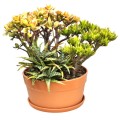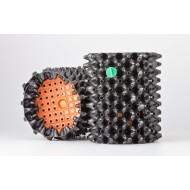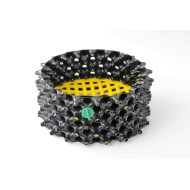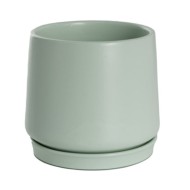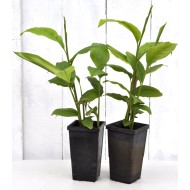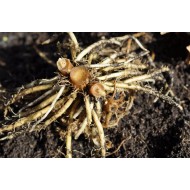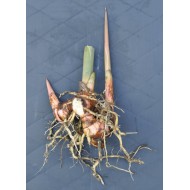







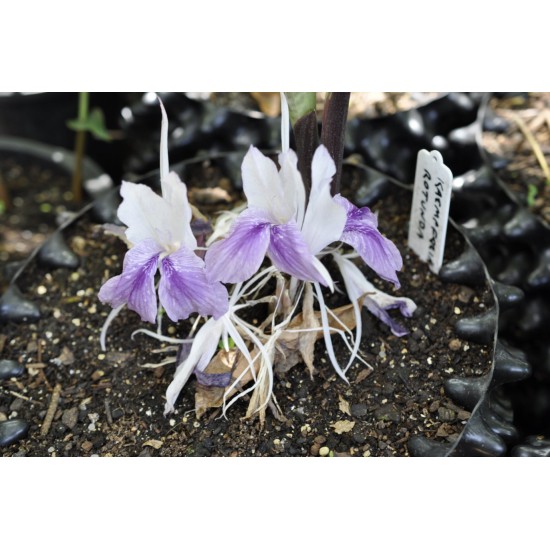

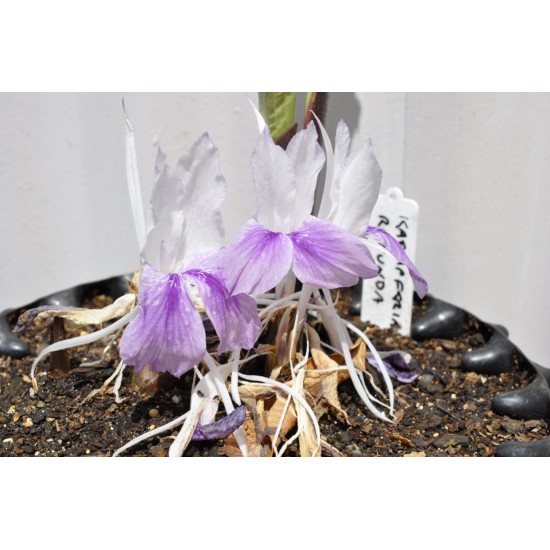



















- Stock: In Stock
- Model: Kaempferia-rotunda-9L-Air-Pot
Family: Zingiberaceae (includes gingers, galangals, and turnerics)
Genus: Kaempferia (includes Thai black ginger)
Botanical/Binomial Name: Kaempferia rotunda
Meaning of Name:
Kaempferia, after Engelbert Kaempfer (1651–1716), a German naturalist, physician, explorer and writer who lived in Japan and east Asia from 1689-1693, writing of their native plants whilst there; and
rotunda, from Latin rotunda (feminine singular of rotundus, ‘round, spherical’): a reference to the shape of the tubers
Common Names: Peacock Ginger, Indian Crocus, Round-rooted Galangale
Botanical Characteristics: Herbaceous | Perennial | Rhizomatous | Frost tender
Propagation: Division of rhizomes
Item Description:
PICK-UP ONLY
Three rhizomes planted in a 9 L Air-Pot ®. Some companion Selaginella kraussiana is growing on the surface and more again is growing out of one of the wall cones.
This is the exact item as in the first eight photos. The flowers are short-lived and only appear when the plant comes out of dormancy, and will not be present at time of purchase.
Dimensions of the 9 L Air-Pot ®:
Inside diameter: 233 mm
Outside diameter: 269 mm
Height: 275 mm
The top two rows of cones are closed and act as a water reservoir.
Plant Description:
This member of the ginger family is both a medicinal plant as well as a striking ornamental.
The flower and leaf are never seen together, but the all-over-the-place weather the past few years seems to trigger the highly irregular appearance of both at once these days. Also unusual is that the flowers last about a week instead of the more typical two or three days.
This exquisite plant is currently growing in a 9 L Air-Pot ®, in which all gingers do amazingly well.
Growing Information:
Kaempferia rotunda happily grows in a pot or in the ground, and will absolutely thrive in any permanently cool, shady spot as the last three photos show.
Like all members of the ginger family, K. rotunda prefers a well-draining soil rich in organic matter.
The unique Air-Pot container massively reduces, if not outright eliminates, root disturbance when repotting or transplanting, However, this assumes the root ball is kept intact. If your intent is to break up the K. rotunda rhizomes when repotting or transplanting, I’d strongly recommend waiting until the plant enters dormancy in June/July and the last leaf has fallen off around September/October. This is because the K. rotunda rhizome withdraws all nutrients from the leaves to store over winter, and it is best not to disturb the plant or its leaves whilst it does so. The plant is completely dormant and safe to transplant/divide when all leaves come away without any resistance whatsoever.
Rhizomes reshoot around November. Typically the flowers appear first for a few days, then die to be followed by the leaves, but of late this hasn’t been the case and both are just as likely to appear together as not, at least here in my climate.
Local pick-up is welcome — we’re in Gwynneville, near Wollongong University.
Pick-up is by mutual arrangement please, as we don’t have a shopfront.
Having said that, we are always here and more often than not can easily fit in with whichever day and time suits you best!
Feel free to suggest preferred pick-up time(s) in the comments box during checkout and we’ll reply as soon as we see the notification.
Especial Note Regarding Large Air-Pot® Orders
Depending on the order, we may suggest that large Air-Pot® orders are best sent directly to you from the warehouse.
Especial Note Regarding Jujube Trees
When posting out bare-rooted jujube trees, we routinely trim them to fit the box and keep postage costs to a minimum. These trees are typically knee-high when planted out, though some may be smaller.
This of course doesn’t apply for pick-ups, and in fact we will set aside the tallest trees specifically for this purpose. These trees can often be hip-high, and sometimes taller again.
Please note that this is not a guarantee, as heights of different cultivars can differ from year to year.





